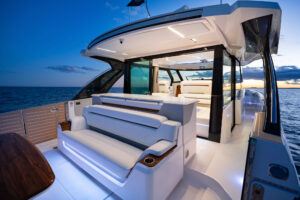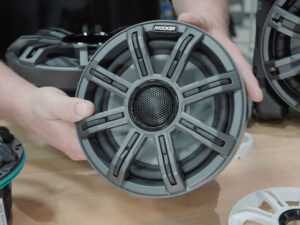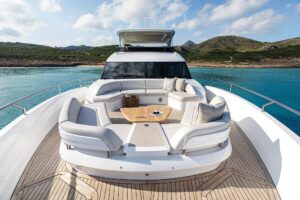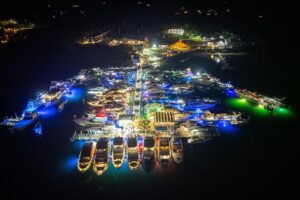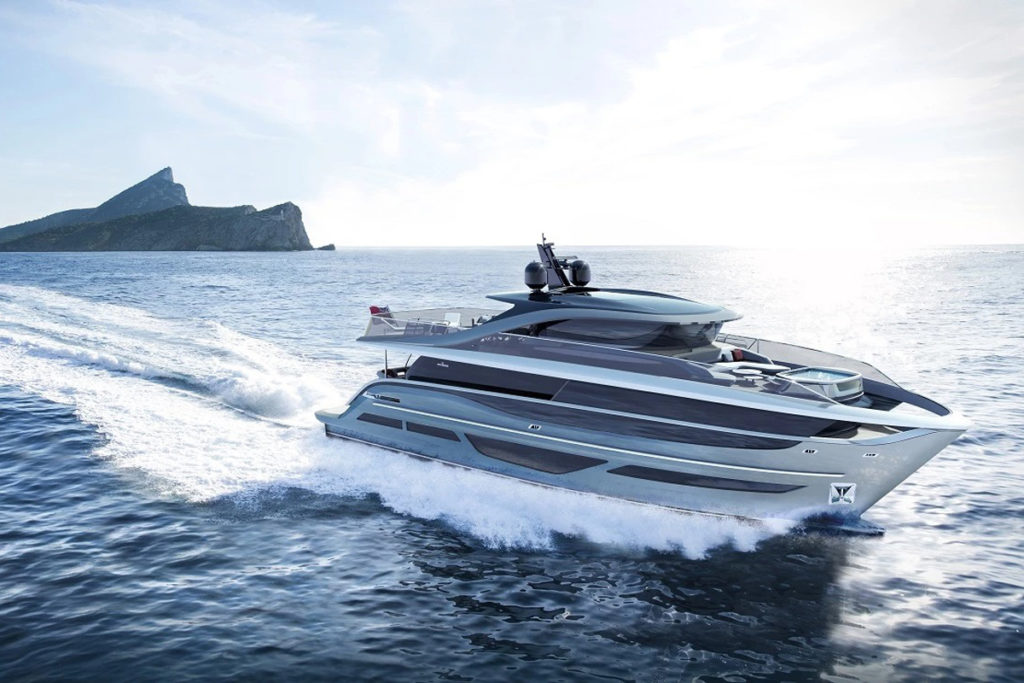
Yacht propulsion is undergoing an evolution. A decade ago, powering a boat by anything other than standard diesel engines was a rarity. Fast forward to the Cannes Yachting Festival 2021 and every single builder and broker was talking about one thing: sustainability. Electric, hybrid, hydrogen and solar power systems are all being proposed as the solution to eco-friendly yachting. Meanwhile, new environmental regulations are in place to reduce emissions even on diesel-powered craft. The question arises, what’s driving the move to greener boating – is it eco-aware owners, forward-thinking yacht builders or the looming threat of legal regulations? The answer seems to lie in a mix of all three. “We are starting to see a shift in customer demands and are trying to stay one step ahead,” says Nick Smith, head of product planning at Princess Yachts. “We recognise our obligation to facilitate responsible yachting and have established a sustainability roadmap to help our customers to continue to enjoy boating. Hybrid drive is just part of this strategy.” With this aim in mind, Princess Yachts has introduced hybrid drive on its latest X95 and Y95 models.
A purely electric-powered large yacht is not yet seen as feasible to meet range and performance standards; pure-electric boats currently make up fewer than 100 units sold per year and are mostly seen in day-boats or where solar panels supplement the electric power. But hybrid power – a combination of electric motor, generator, battery and diesel power – allows builders to deliver performance while reducing overall emissions. There are myriad versions of hybrid propulsion, offering multiple modes of operation, so a yacht can run on battery mode or supplement with diesel; ‘diesel-electric mode’, for instance, allows the electric motors to be directly driven from the generators.
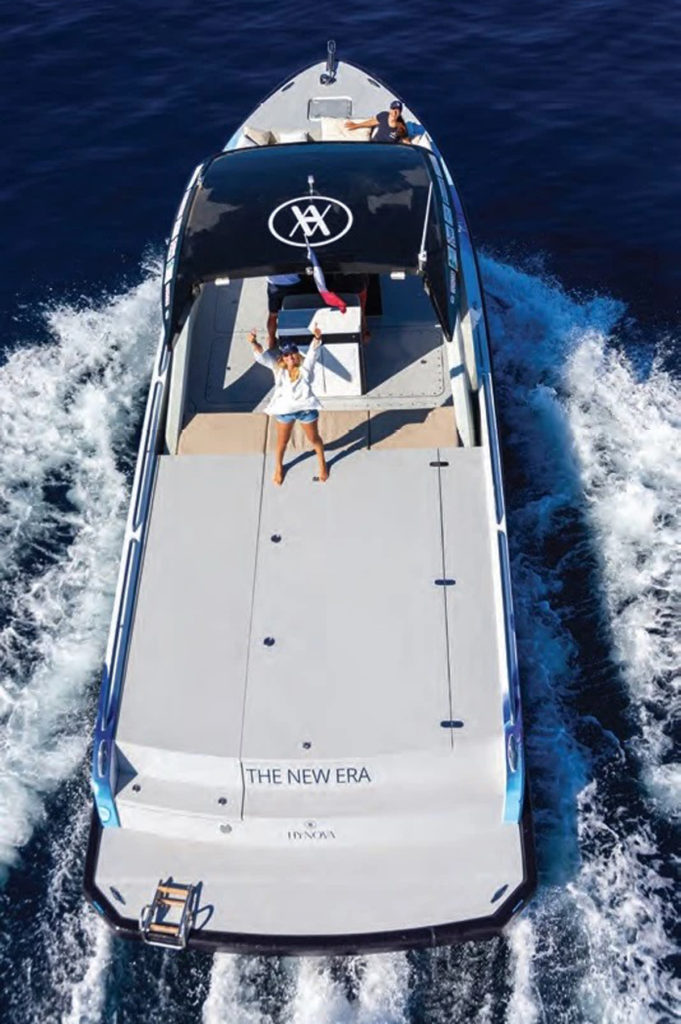
“For our first hybrid installation, the new MAN Smart Hybrid Experience supplements each V12 engine (1,900 or 2,000 metric horsepower options) with a 250mhp electric motor,” says Smith. “This electric motor can be separated from the diesel engine by an electromagnetic clutch and it can be used as both a drive motor or as a generator, and is even able to shift modes without stopping the main propulsion engine. The ‘cross-over mode’ on the Princess X95 and Y95 models allows both shafts to be driven by the energy provided by a single engine or the battery pack. There’s even a ‘boost mode’, which lifts the vessel’s potential top speed to 26 knots.”
Reducing a yacht’s environmental impact isn’t the only benefit to using alternative propulsion. There is also the promise of a quieter ride without the hum of a diesel engine. When running in ‘hotel mode’ the new Princess X95 and Y95 models are able to run typical electrical loads overnight without the background noise of the diesel generators (this includes high-power galley equipment, stabilisers and air conditioning). Even better, in ‘zero-emission mode’, the yacht can run for more than 30 minutes at around 11.5 knots, ideal when cruising in environmentally sensitive areas. Another win is in the improvement in fuel consumption, with less fuel consumed per hour, which also reduces operating costs.
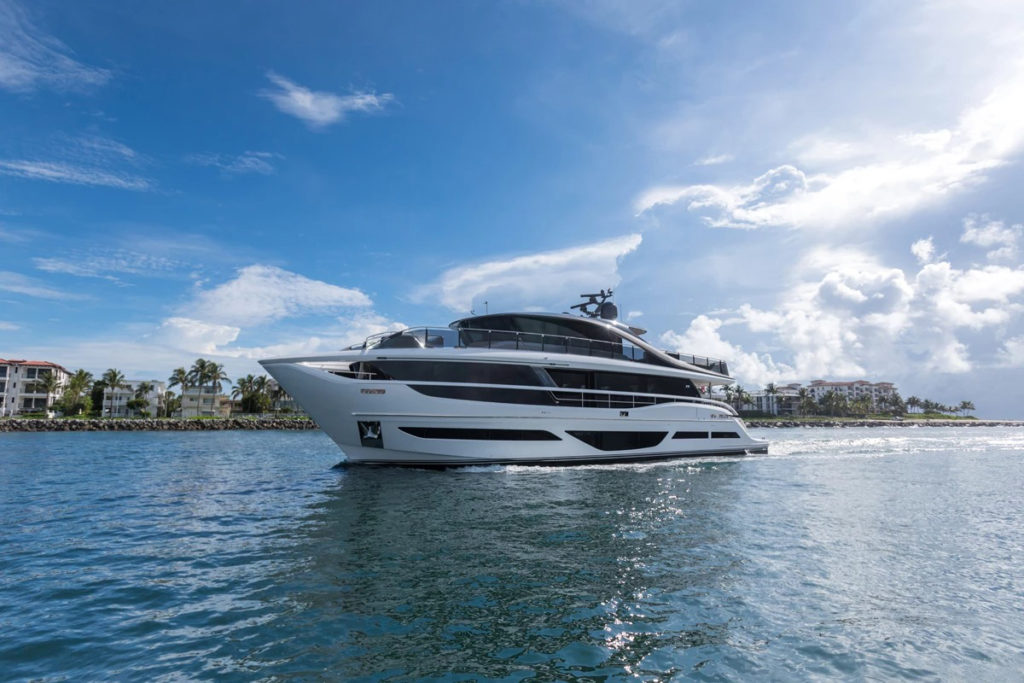
Builders might experiment with eco-friendly propulsion options, but legislation certainly forces immediate action. For instance, the International Maritime Organisation, the arm of the United Nations responsible for regulating shipping, have put IMO Tier III regulations into effect controlling the NOx emissions of marine diesel engines. This applies to all yachts built after January 2016 that have a gross tonnage of more than 500GT, diesel engines with more than 130kW of power, and that operate the North America or Caribbean Emission Control Area (ECA). In January 2021, this expanded to also include yachts operating in the Baltic Sea or North Sea ECA. Dutch builder Amels delivered the first superyacht to meet Tier III standards, utilising a 40 per cent urea solution which transforms the exhaust gases into harmless nitrogen, water and a tiny amount of CO2.
Building a greener yacht, however, is not without its challenges. Namely, getting more into the engine room without compromising guest living space on board. “The most significant challenge came in packaging the additional equipment,” Smith attests. “Safely packaging all of the additional electrical equipment and batteries in a way to suit our production build and future maintenance gave a real test for our team of excellent engineers. Working in collaboration with MAN for their first leisure marine application of this drive train helped us realise both garage and beach club layouts for the hybrid variant.”
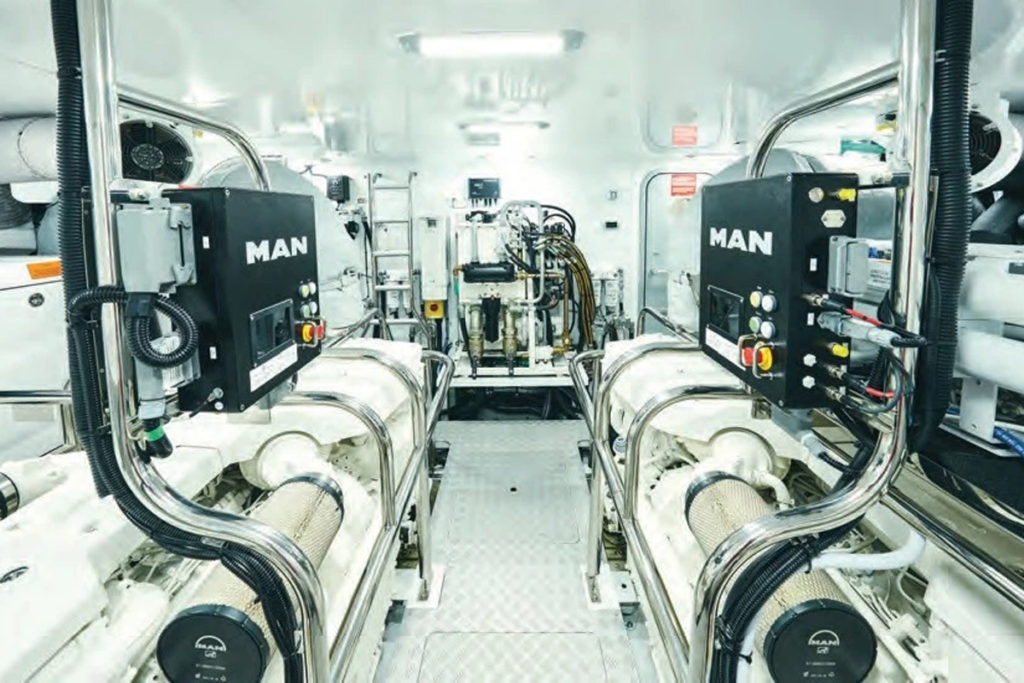
Another alternative fuel solution that many are predicting as the future of power is hydrogen. The benefits seem too good to be true: zero emissions and no noise or vibration. Hydrogen fuel is already being used on passenger ferries in Europe, and it is being explored by yacht builders and designers in futuristic concepts. Meanwhile, Hynova is developing the first hydrogen powered tender/day boat in the Hynova 40.
The challenge with hydrogen is found in the ability to refuel. Fuel Cell Systems Ltd is collaborating on a French project for a mobile refuelling station, which could supply 40kg of hydrogen – that’s the equivalent of 250 litres of diesel fuel. The internet went crazy when news came out that Bill Gates was buying a hydrogen powered yacht, only for the story to be refuted, but it certainly got people talking about the future possibilities of hydrogen power and boats.
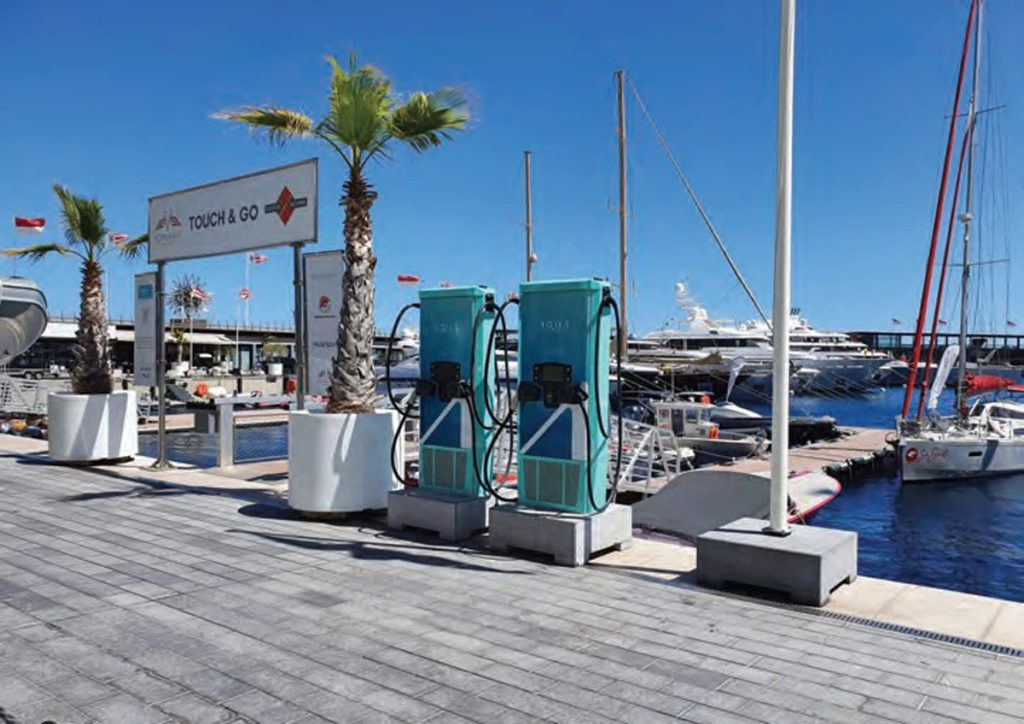
One roadblock to green yachting is that it’s not yet easy to find places around the world to refill urea or hydrogen tanks, or to charge an electric-powered day-boat, for that matter. Companies like Aqua superPower are trying to change the latter by installing electric boat charging stations at marinas around the Mediterranean Sea and at Princess’s home in Plymouth (as part of a government-funded programme in collaboration with Plymouth University, Plymouth City Council and Princess Yachts). Until the time comes that these power supplies are more readily available, then hybrid propulsion and reliance on at least some diesel fuel will likely be the go-to for greener power.
The yachting industry certainly isn’t alone in the quest to become more eco-conscious. Every industry is taking a harder look at their environmental impact, but if anything, yacht owners have more at stake when it comes to protecting the ocean where they derive so much pleasure. And boatbuilders won’t have anything to sell if cruising grounds are ruined by engine exhaust.
“We make luxury craft that are able to be enjoyed in some of the most beautiful and awe-inspiring backdrops available,” says Smith. “We have to maintain our ability to do this. We cannot find ourselves in a position where we are legislated out of existence, and by taking responsibility for our industry now, we hope to stimulate positive change.” One thing is clear, when it comes to cruising the ocean blue, there is more of a focus than ever on being green.

